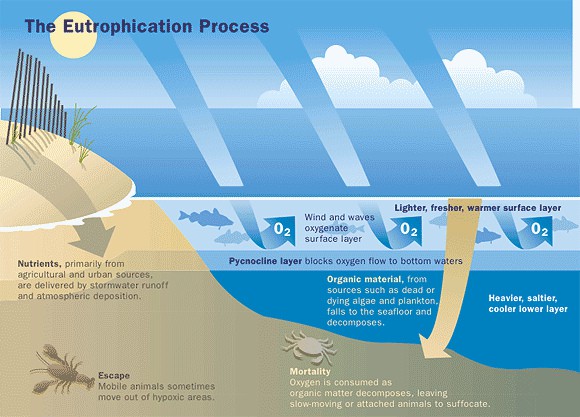Agroecology: Importance, benefits and Principles

Regardless of the type of activity we engage in, the environment is impacted one way or the other. All the major industries in the world affect the state of the environment in all their activities. From Real Estate to Hospitality, Manufacturing, Mining, Tourism, every industry you can think of.
It may sound surprising, but even agriculture has negative impacts on the environment, and if we do not take proper measures, the damage can be more than expected. Without implementing excellent agricultural practices, the balance of the ecosystem will be affected.
Agriculture has advanced better than it used to be in the old days; with improved practices, the industry has supplied large volumes of food to global markets. However, resource-intensive practices and high-external input have resulted in water scarcities, deforestation, soil depletion, and biodiversity loss, amongst other effects.
One of the most efficient solutions to the negative effects of agriculture on the environment is Agroecology. It is an integrated approach in which ecological and social principles and concepts are applied simultaneously to the design and management of food and agricultural systems.
Agroecology can also be defined as the study of applying the most efficient ecological processes to agricultural production systems. It is similar to sustainable farming, a scientific framework integrating human socio-economic systems and ecological concepts into agricultural operations.
In other words, Agroecology is a technique of sustainable farming that focuses on utilizing natural resources comprehensively without letting them be susceptible to damage. With this type of farming at hand, farmers can instantly develop better solutions to improve their environmental and economic pressures.
Agroecology seeks to optimize the relationships and interactions between animals, plants, people, and the environment while addressing social issues for a fair and sustainable food system.
Agroecology is very different from other approaches to achieving sustainable development because it is based on territorial and bottom-up processes. It combines science with traditional, practical, and local producers’ knowledge.
Instead of improving unsustainable agricultural practices, agroecology seeks to transform agricultural systems by addressing the root cause of the problems in an integrated way and providing effective and long-term solutions.
History of Agroecology
The term “Agroecology” was first used by Basil Bensin, an American Agronomist, in 1928, and he referred to it as the application of ecological methods to improve agronomic research processes.
As decades passed, the idea grew progressively, and the term evolved to the idea of encouraging an ecosystem that has been modified by human activities.
In the 1990s and 2000s, the term became a global idea, and agroecology was used for defining and understanding the system of production, distribution, and consumption of food resources in all its components, including agricultural, economic, agronomic, social, and environmental.
Importance of Agroecology
Agroecology has a lot of importance, and it depends on the point of view. While It may seem stressful and time-consuming, it adds a lot of benefits to the farmer, the crops, the environment, the health, and the safety of the people.
1. Improves The Soil Health
There are different agroecological methods to improve agricultural practices. One of which is Integrated Soil Fertility Management, which relies on the combination of mineral and organic fertilizer to achieve optimum soil health. Agroecology improves the health of the soil so natural functions can be performed easily.
To grow healthy crops, the soil must be healthy, and with agroecology, the soil is improved, making the growth and production of crops efficient.
2. Economic Development
Regardless of how developed a country is, if the agricultural industry is not advancing, every part of the country will be affected.
Implementing agroecology practices boosts the economy of every country because there will be a massive reduction in the application of outputs like pesticides and chemicals. This will give rise to the development of other industries.
3. Improves Quality of Life
Agroecology recognizes and accepts the multi-functional aspects of agriculture, local, and indigenous practices and knowledge.
So, with agroecology, farming is not only improved, but there are also benefits to the social, cultural, and environmental aspects of life. Producing food by implementing agroecology will result in enough food to feed the ever-increasing population of man.
Benefits of Agroecology
The good thing about agroecology is that it does not achieve short-term benefits but rather long-term goals. There are various benefits to agriculture, the environment, and the ecosystem.
1. Increases Efficiency
Agroecology involves using efficient processes that reduce the inputs of industrial products and their adverse effects.
The methods used in agroecology are the effective use of water, better seeds, planting density, design, and efficient use of farm chemicals. These processes reduce the negative effects of agriculture on the environment and improve efficiency.
2. Improved Agricultural Operations
Agroecology seeks to change the input-intensive and environmentally harmful practices and services to renewable, eco-friendly, and naturally sourced practices. Instead of relying on the old, traditional agricultural processes that have various negative impacts on the environment, food grown, and people, there are better practices that are safe.

Principles of Agroecology
In aiding the transformation of food and agricultural systems to sustainable agriculture on a large scale and achieving zero-hunger, 10 principles of agroecology were developed.
They are; diversity, synergy, co-creation, and sharing of knowledge, efficiency, resilience, recycling, human and social values, responsible governance, culture and food traditions, and circular and solidarity economy.
1. Diversity
Diversification is important in transitioning agroecological processes to ensure food nutrition and security while protecting, conserving, and enhancing natural resources. Agroecological systems are very diverse, and they optimize the diversity of genetic resources and species in different ways.
Agroecological diversification strengthens socio-economic and ecological resilience, like creating new market opportunities. Having a diversified source of income from new and differentiated markets helps stabilize household incomes.
2. Synergy
Developing synergies help enhance key functions across food systems and support the production and multiple ecosystem services.
Agroecology focuses on designing diversified systems that combine perennial and annual crops, aquatic and livestock animals, soils, trees, water, and other components that enhance synergies within an increasingly changing climate.
By optimizing biological synergies, agroecological practices enhance ecological functions, resulting in greater resource-use efficiency and resilience. By maximizing synergies, food crops significantly improve yields, weed control, dietary diversity, soil structure, fertility, pest control, and biodiversity habitat.
3. Co-Creation And Sharing of Knowledge
There is a better response to local challenges when agricultural innovations are co-created through participatory processes.
Agroecology depends on context-specific knowledge; it does not offer fixed prescriptions. Instead, agroecological practices are tailored to fit the social, environmental, cultural, political, and economic context.
Through co-creation, agroecology blends indigenous and traditional knowledge with traders’ and producers’ knowledge and global scientific knowledge.
Encouraging participatory processes and institutional innovations that develop mutual trust enables sharing knowledge and co-creation that contributes to relevant agroecological processes.
4. Efficiency
By implementing agroecological practices, we can achieve more while utilizing fewer external resources. Agroecological systems improve the use of natural resources, especially those in abundance, and are free, like atmospheric carbon, solar radiation, and nitrogen.
Producers can reduce costs, use fewer external resources, and reduce the negative environmental impacts of external resources by enhancing biological processes and recycling nutrients, biomass, and water.
Producers can increase autonomy and resilience to natural and economic shocks by reducing dependency on external resources.
5. Resilience
Agroecology enhances the resilience of communities, people, and ecosystems to sustain food and agricultural systems. Having a diversified agroecological system is more resilient because there is a greater capacity to resist pests and disease attacks and recover from unfortunate disturbances, like extreme weather events.
By maintaining a functional balance, agroecological systems can resist pests and disease attacks and promote a necessary community of interacting organisms to self-regulate pest outbreaks.
Agroecological practices also enhance socio-economic resilience. Producers can reduce vulnerability through integration and diversification.
6. Recycling
In the natural ecosystem, there is no such thing as waste; it is a human concept and the unwanted residue left behind after human activities. Recycling can be done on both landscapes and farm-scale settings through diversification and the building of synergies between different components and activities.
Agroecology imitates the natural ecosystems in supporting biological processes that propel biomass, water, and nutrients recycling within production systems, minimizing pollution and waste while increasing efficiency.
7. Human and Social Values
Agroecology emphasizes human and social values, including equity, dignity, justice, and inclusion, which contribute to improved livelihoods.
By encouraging autonomy and adaptive processes to manage agroecosystems, agroecological processes empower people and communities to overcome hunger, poverty, and malnutrition while promoting human rights.
8. Responsible Governance
Effective governance mechanisms at different scales, from local to national to global, are important in implementing sustainable food and agricultural practices.
An accountable, transparent, and inclusive governance system is essential in creating an enabling environment that supports producers to transition their systems to agroecological practices and concepts.
9. Culture and Food Traditions
Agroecology contributes to food nutrition and security while maintaining the health of the ecosystem when healthy, diversified, and culturally appropriate diets are supported.
Some major components of human heritage are food and agriculture, so they play a vital role in shaping human behavior. Agroecology rebalances modern and traditional food habits and brings them together to promote healthy food production and consumption.
10. Circular and Solidarity Economy
A circular and solidarity economy assists in living within the planetary boundaries while ensuring a social foundation for sustainable and inclusive development.
Agroecology reconnects producers and consumers through a circular and solidarity economy, prioritizing local markets and supporting local economic developments
What are the Levels of Agroecology?
Generally, agroecology can be classified into five different levels. This was created by Gleissman, who used his brilliant mind to transform food systems into diverse groups.
While the first three are based on local practices, the remaining involve the food system. All of these levels are significantly helpful that farmers can use to transform their farms into conventional agroecosystems.
Level 1- Improves Existing Practice Efficiency
This is the level that focuses on the improvement of current practice efficiency. Every industrial input like fertilizers is tried to make efficient so that its harmful effects can be reduced considerably.
Over the years, many researchers have studied this approach, and it works like magic. That is what has been able to create several innovations in this field.
Improvement in seed, planting design, and intelligent application of farm chemicals are some of the changes that have occurred under this level. So, it can be advantageous.
Level 2- Change Inputs and Practices
At this level, agroecology focuses on creating renewable, eco-friendly, and naturally sourced practices for better efficiency and benefits. So, it typically embraces the idea of
organic farming. This concept is similar to keeping a check on our daily diet to foster well-being. So, instead of using synthetic nitrogen fertilizers, we could replace them with nitrogen-fixing cover crops. Incorporating natural pest control and organic compost could also help foster soil fertility more dramatically in the long run.
Level 3- Restructuring the Agroecosystem
Level 3 incorporates extensive research on diverse factors relating to the entire system of conversions. It also helps understand the primary yield-limiting aspects to be noticed.
To help bring the suitable design alterations into action, continued research is conducted in agroecological design, function, and structure. Reintroduction of farm biodiversity could be a great example of level 3 implementation. Agroforestry, multiple cropping, and permaculture could also be significant actions to implement here.
Level 4- Foster Improved Relationships
At this point, organic farming culture expands, and people are encouraged to consume home-grown foods. The purchasing and eating of in-grown and processed foods locally is a good practice at this level.
Food citizenship occurs by performing these significant steps that become the trailblazer to push agro-ecological changes in the food system.
By focusing on this level of agroecology, a lot of things can change for the better. Also, the relationship between local growers and consumers can get better.
Level 5- Build a Better Tomorrow
At this level, it becomes significant for you to focus on curating a new global food system that goes beyond the usual measures. So, your focus should be on creating sustainability that proceeds towards the path of restoration.
This way, you can help make the most of your natural resources and protect the Earth. So, creating a sustainable food system no longer feels like a tedious task.
This is a deeper level of agroecology that can transform the entire food system. It encourages the idea of embracing sustainability and dumping unnecessary food wastage.
Conclusion
Most of the social, economic, and environmental crisis we face in the world today is a result of the way we organize our food systems. And by implementing agroecological processes, we have a way to respond to instability and meet a significant increase in our food needs without causing any economic, environmental, or social damage.






